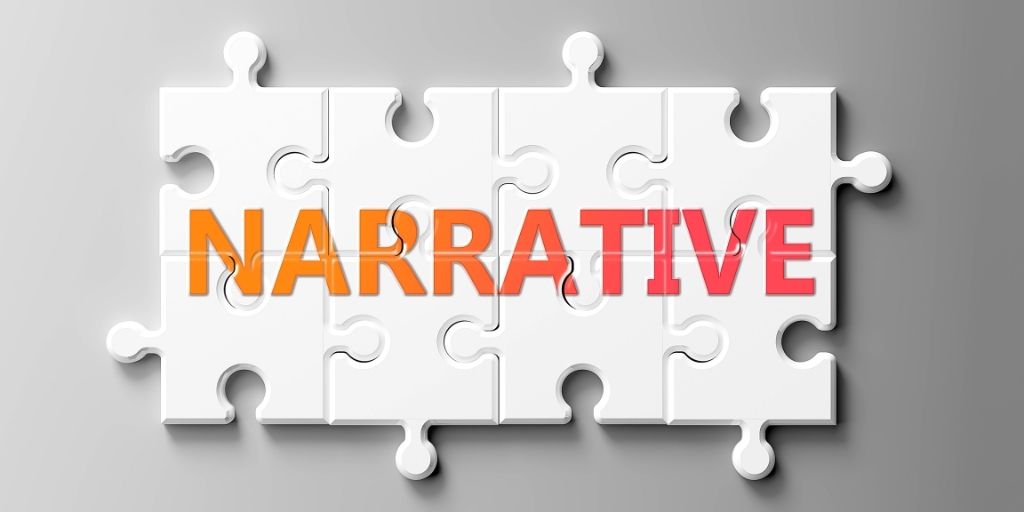
How to Use Narrative Transportation in Your Marketing Efforts
Table of contents
If you’re having trouble connecting with your target audience and compelling them to act, it may be time for a new approach—one that helps your audience enter narrative transportation.
Did you know that humans are biologically and neurologically wired to love and connect with stories? It’s true! And that explains why brands have harnessed the power of storytelling in their marketing efforts. It just works.
But what is it about storytelling that makes it effective? And why do you need to integrate it into your overall marketing strategy?
As it turns out, a neurochemical in the brain known as oxytocin is responsible for this. Known as the “feel-good hormone,” this neurochemical sends signals to the brain that foster feelings of trust, empathy, and compassion.
When you hear a story, it activates sensory receptors in the brain. And this is where narrative transportation can prove valuable in relation to marketing. You just need to learn how to “hack” the human brain’s sensory receptors to compel your audience to take your desired action.
The good news is we’re going to show you how. But first, let’s take a deeper dive into this concept…
What Is Narrative Transportation & How Does It Relate to Marketing?
Narrative transportation is what happens when people fully engage in a story. During this experience, people completely immerse themselves in whatever they’re reading, watching, or listening to. They become emotionally involved in the narrative, visualize the story in their minds, and empathize with the characters. It’s such a powerful state that they’re more susceptible to changes in their attitudes, beliefs, and intentions.
However, this type of experience doesn’t just come from reading a good book or watching a compelling movie. It can also come from getting swept up in a story told through a company’s marketing…
The application of neuroscience in marketing isn’t new. According to Animaker CEO Srinivasa Raghavan, marketers should understand how the human brain works. He has gone on to talk about the concept of neuroscience marketing, which taps into the principles of neuroscience to understand and predict customer behavior.
According to Raghavan, there are two systems of thinking in the human brain:
- The intuitive and emotional one
- The rational and logical one
Humans are naturally wired to prefer the first method of thinking—the emotional one.
This is what supports the power of narrative transportation as a marketing tool. Using stories to humanize your brand seems like an oft-repeated tip when it comes to marketing. But that’s just because it does what it’s supposed to do—foster trust and empathy.
Before we get into how to achieve that by using stories and building a favorable narrative for your brand, let’s look closer at the intricacies of this technique—specifically how it works…
It Alters Cognitive Responses
Great stories can transport you into their world. You become unaware of your own environment and lose a sense of time or space. Essentially, your brain places you inside the story.
Through narrative transportation, it makes it possible for your audience to develop strong emotional reactions to the story you are telling.
When they enter this phase, they experience altered cognitive responses. They base their decisions on the new experience rather than the real and logical one. Why? Because they are deeply immersed in your story.
It Fosters an Emotional Attachment
Humans are empathetic creatures. As such, we respond to stories that cultivate emotions and a sense of connection. That’s why you may cry when a character in a book, TV show, or movie dies. Even though it isn’t real, you feel bad because you developed an emotional attachment to that character.
When used in marketing, this tool encourages the audience to experience an emotional response to a brand’s story, including the characters and the overall mission.
It Compels Action & Behaviors
This is where the true impact of this marketing technique takes place. Once the audience is transported to the story’s realm, you can transform their opinions and beliefs.
It has the powerful ability to mold people’s feelings and thoughts, and even compel them to act.
Simply put, narrative transportation is more than just capturing people’s attention with your story. It is making them an active participant in your story’s realm so you can encourage certain actions and behaviors.
What Are the Benefits of Using This Technique?

A great story will stay with you for a long time. Long after you’ve put down a book or watched a movie, the raw emotions still thrive within you. And if you can achieve that when using the power of storytelling in your business, imagine what you can do when you’re successful at helping your audience enter narrative transportation!
1) It Gets Your Audience Involved in the Story
This narrative tool is effective because it makes your audience assume the belief that you are trying to advocate in your story.
Humans are naturally inclined to counterargue certain facts when they hear them. But when you successfully execute narrative transportation, you weaken resistors in the brain. Instead, they experience a high level of immersion, and they adopt what the story gives them.
2) It Helps Them Relate to the Characters
A good story should have characters that the audience can relate to. Once that connection is established, it is easy for the audience to adopt the same beliefs and behaviors as the character.
From there, it becomes a powerful tool that brands can use to encourage the behaviors and actions of their audience. Unknowingly, the audience alters their behavior to mirror that character. It makes them more receptive to the messages you are sending.
3) It Creates an Emotional Connection
As mentioned above, humans tend to favor the intuitive and emotional side of their brain. We use emotion when making decisions. This holds massive potential to capitalize on narrative transportation because emotions affect motivation.
By telling a story that is emotionally charged, your audience will likely encode that emotion in their memories. When you couple those emotions with ideas, they are more likely to internalize and adopt those ideas.
4) It Makes the Story Feel Real
Earlier, we pointed out that the use of narrative can make your audience lose a sense of time and space in real life as they are transported into the world of your story.
A good story does not just hold your attention. When you are transported, you are not just a passive observer but an active participant in the story.
That’s one of the benefits of using this technique in marketing: It blurs your audience’s concept of what is real and what is not. When framed correctly, the stories you tell become their new reality.
How to Apply Narrative Transportation to Your Marketing

If you want your brand to take off, you need more than just quality products or services. You need a firm grasp of how to bring people into your story. This is where narrative transportation comes in, and here’s how you do it…
Create a Brand Story
Want to build a strong emotional connection with your audience? Tell your brand story!
Don’t bore them with the traditional About Us content on your website. Give them something to relate to.
What passion drove the founders to develop your products or services?
What challenges did they face along the way?
What’s your mission as it pertains to your audience?
The goal is to build favorable viewpoints about your brand. Make your audience feel as though they are part of your journey.
Make Your Audience the Hero
The “hero” in your narrative isn’t your company—it’s your customers. And by making them the protagonist, they become more emotionally invested in the story. It also makes them feel valued.
For example, align your narrative so that your consumers feel like they can help save the planet by choosing to buy your sustainable products. Make them feel as though they are empowered when making their buying decision.
Narrative transportation helps consumers see themselves using your product within that story.
Include Conflict
Just like any story, conflict is essential when developing a narrative about your brand. After all, what’s a story without conflict?
Conflict refers to the struggles and problems that consumers face in their lives. You can make your marketing efforts more compelling by weaving in a story that presents your brand—and its products or services—as conflict resolution.
Humans are hardwired to bring order into chaos. If you want to bring your narrative together, you can project your brand (or its products) as a tool to achieve your desired outcome.
Final Thoughts
A remarkable story transports you, sweeps you off your feet, and leaves you feeling different about yourself and your surroundings.
That’s how powerful narrative transportation can be.
Since ancient times, cavemen have drawn on walls and rocks to tell stories. It’s a natural compulsion for humans.
Several centuries later, stories haven’t lost their appeal, even in a digital era when human connections are few and far between. Marketing experts agree it’s not just the cherry on top—it’s the standard of modern marketing. Worried that your story isn’t compelling enough? Request a FREE StoryBrand Audit today!

